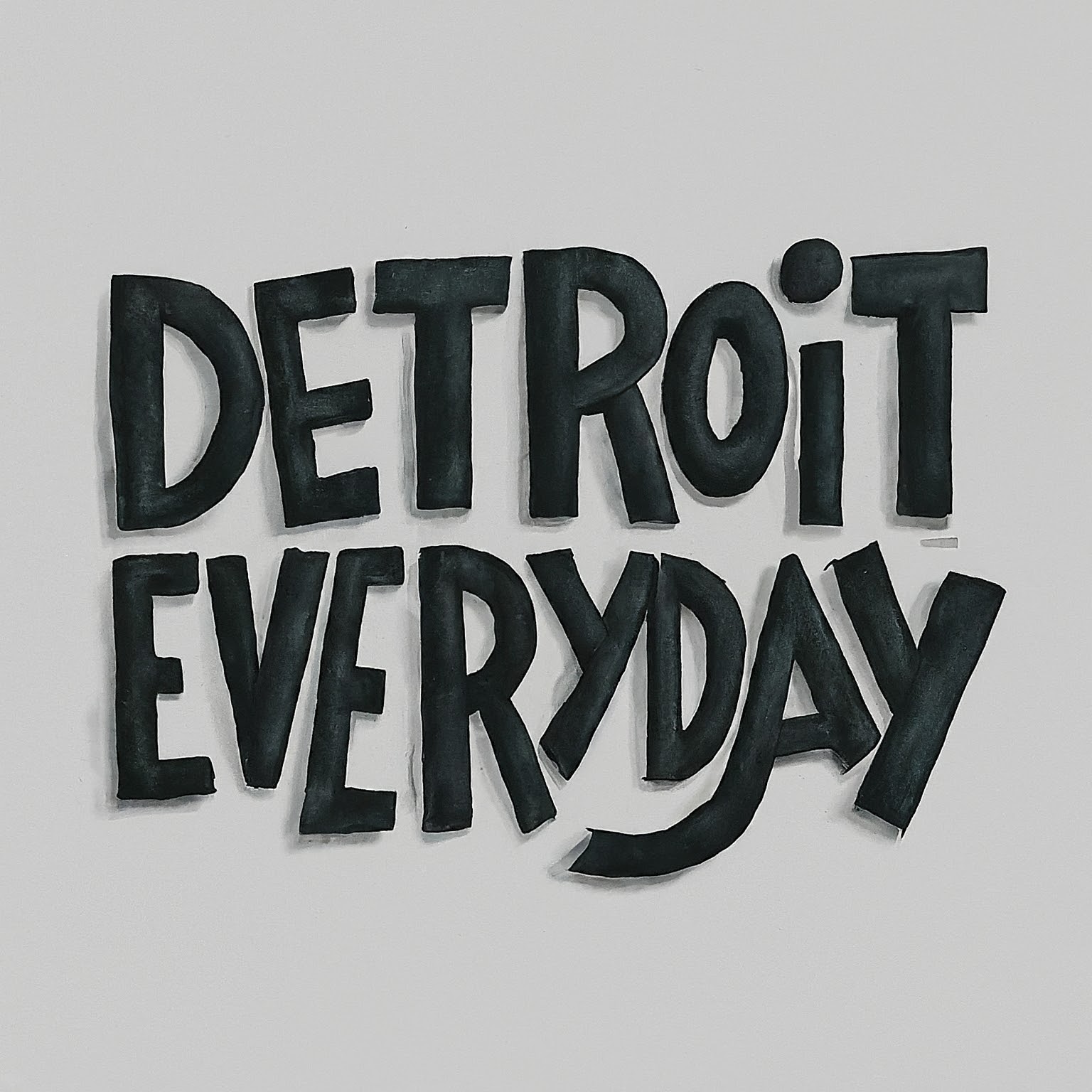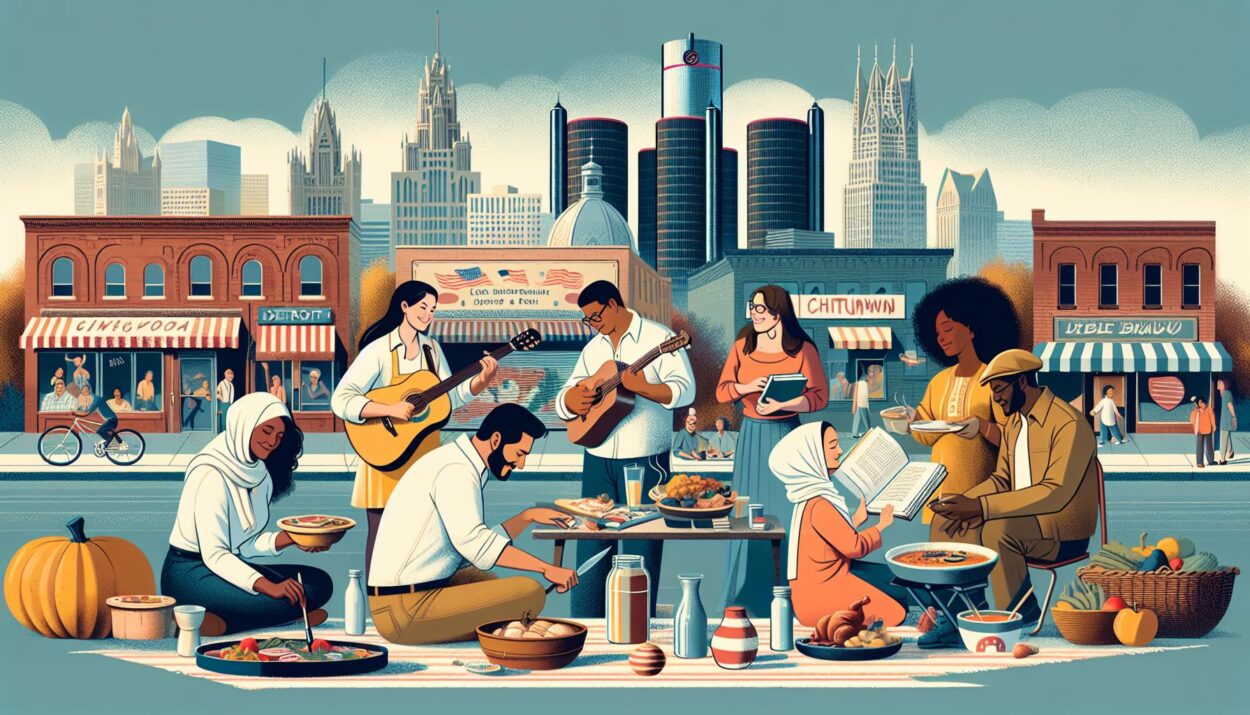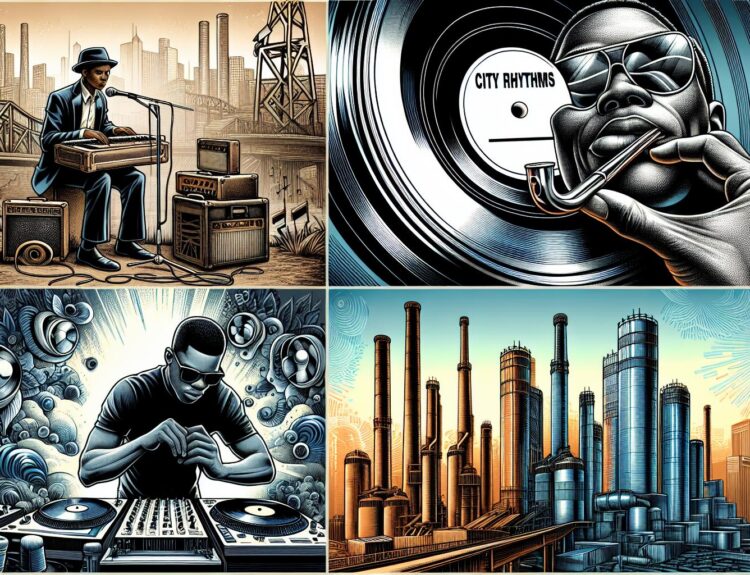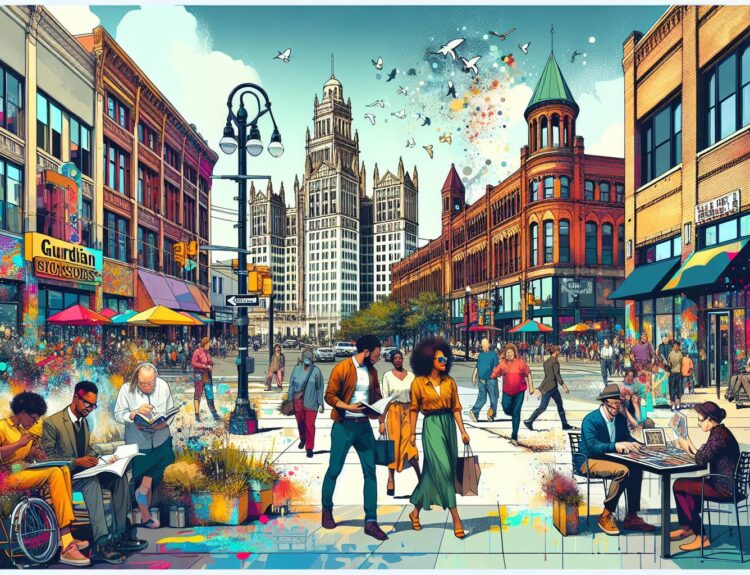Living in Detroit, I’ve come to appreciate the vibrant tapestry of languages that color our city. Beyond English, Detroit is a melting pot of diverse cultures and tongues. From Spanish to Arabic, the symphony of languages spoken here reflects our rich heritage and history. As I navigate the bustling streets of Detroit, I’m constantly surrounded by a beautiful mosaic of voices that echo our city’s multicultural essence.
Exploring the various languages spoken in Detroit unveils a world of stories, traditions, and connections. Whether it’s hearing French in the cafes of Midtown or Swahili in the markets of Southwest Detroit, each language adds a unique flavor to our urban landscape. Embracing this linguistic diversity not only broadens our horizons but also fosters a sense of unity amidst our differences. Join me on a journey through the linguistic kaleidoscope of Detroit, where every word spoken is a thread in the colorful fabric of our community.
Spanish in Detroit
When walking around Detroit, Spanish is often heard in various neighborhoods throughout the city. It’s more than just a language here; it’s a cultural connection for many residents. Approximately 5.2% of Detroit’s population speaks Spanish, creating a vibrant community that brings a touch of Hispanic heritage to the city.
Exploring Southwest Detroit, known as “Mexicantown,” one can immerse themselves in the sights, sounds, and flavors of Hispanic culture. From delicious authentic Mexican cuisine to colorful murals depicting Latino heritage, the influence of Spanish speakers is evident at every corner.
Local businesses, schools, and community centers often provide services in Spanish to cater to the needs of Spanish-speaking residents. This inclusivity fosters a sense of belonging and strengthens the cultural fabric of Detroit.
As I navigate the bustling streets of Detroit, hearing the melodic tones of Spanish being spoken reminds me of the beauty of linguistic diversity. It’s a testament to the city’s openness to embracing different cultures and celebrating the mosaic of voices that make Detroit a truly special place.
Arabic in Detroit
Moving on from the vibrant Spanish-speaking community in Detroit, it’s fascinating to explore the prevalence of Arabic in the city. With around over 40,000 Arab Americans, Detroit stands out as one of the largest Arab American communities in the United States. This rich cultural tapestry can be felt in various neighborhoods, with Dearborn famously known as the ‘Arab Capital of North America.’
In Detroit and its surrounding areas, Arabic isn’t just a language; it’s a way of life for many residents. From the delicious aroma of Middle Eastern cuisine wafting through market stalls to the melodic sounds of Arabic music on bustling streets, the influence of this language is truly pervasive.
Not only does Arabic play a significant role in everyday interactions, but it also contributes to the city’s diverse linguistic landscape. According to recent data, Arabic is the third most spoken language in Michigan after English and Spanish, underlining its importance and deep-rooted presence.
In addition to everyday conversations and cultural events, the Arabic language shapes various aspects of life in Detroit, from businesses with bilingual signage to mosques where prayers are held in Arabic. The language serves as a bridge that connects generations, preserving traditions, and fostering a strong sense of community within the Arab American population.
From vibrant markets offering traditional goods to community centers hosting cultural celebrations, Arabic in Detroit isn’t just a language; it’s a symphony of traditions, stories, and connections that add to the city’s diverse and welcoming atmosphere.
French in Detroit
Growing up in Detroit, I was always surrounded by a rich tapestry of languages woven into the city’s cultural fabric. French has a notable presence here, stemming from the city’s historical ties to France and its proximity to French-speaking Canada.
- French influence in Detroit dates back centuries, with French explorers and settlers leaving a lasting impact on the region’s language and culture.
- From street names like “Cadillac Avenue” to cultural events celebrating French heritage, the French language adds a unique flavor to Detroit’s linguistic landscape.
In addition to French, the city’s linguistic diversity continues to flourish, creating a melting pot of languages that reflect Detroit’s dynamic and inclusive spirit.
Swahili in Detroit
Detroit’s linguistic tapestry extends beyond French and Arabic, with Swahili also making its mark on the city’s diverse language scene. Swahili, a Bantu language with roots in East Africa, has found a place within Detroit’s multicultural environment, reflecting the city’s ongoing embracing of various tongues and cultures.
The presence of Swahili in Detroit can be attributed to the city’s history of welcoming immigrants from different parts of the world. As a language spoken by millions of people in East Africa, Swahili adds another layer of richness to Detroit’s linguistic landscape, showcasing the city’s openness to embracing global diversity.
In addition to the cultural significance, the growing number of Swahili speakers in Detroit contributes to the vibrancy and interconnectedness of the community. As individuals from Swahili-speaking backgrounds bring their language and traditions to the city, Detroit continues to evolve as a hub of multicultural exchange and understanding.
Embracing Linguistic Diversity in Detroit
Detroit’s linguistic landscape is a vibrant tapestry woven with diverse languages beyond English. Swahili stands out among the languages spoken in the city, reflecting its rich multicultural heritage. This linguistic diversity is a testament to Detroit’s history of welcoming immigrants and different cultures, creating a melting pot of languages and traditions.
As I navigate the streets of Detroit, I encounter a symphony of languages spoken by its residents. From Spanish to Arabic, Bengali to Polish, the city echoes with the sounds of global communication. Each language tells a unique story of migration, heritage, and connection, adding to the colorful mosaic that is Detroit’s linguistic identity.
The presence of Swahili in Detroit is not just a linguistic phenomenon but a symbol of the city’s openness to the world. With a growing number of Swahili speakers calling Detroit home, the language bridges gaps and fosters understanding across cultures. It’s more than just words; it’s a celebration of diversity and an invitation to embrace the richness of different tongues and traditions.
In a world that is becoming increasingly interconnected, multilingualism is an asset that Detroit proudly showcases. The ability to speak multiple languages enhances communication, cultural appreciation, and economic opportunities. Detroit’s commitment to linguistic diversity sets an example for other cities, highlighting the importance of embracing and celebrating the myriad languages that make up our global community.
As Detroit continues to evolve and grow, its linguistic landscape evolves with it. The city’s embrace of diverse languages reflects a broader trend towards multiculturalism and inclusivity, where each language spoken is a thread in the larger fabric of understanding and cooperation. Detroit’s linguistic diversity is not just about the words we speak but the connections we build, the stories we share, and the bridges we create between communities near and far.
Conclusion
Detroit’s linguistic diversity is a true reflection of the city’s vibrant cultural mosaic. The presence of Swahili, alongside languages like Spanish, Arabic, Bengali, and Polish, underscores Detroit’s rich heritage of migration and interconnectedness. As the number of Swahili speakers in Detroit grows, it symbolizes our city’s embrace of global connections and cultural exchange. By celebrating and nurturing linguistic diversity, Detroit sets a shining example for fostering communication and understanding across communities. The evolving linguistic landscape of Detroit not only mirrors the broader trend towards multiculturalism but also highlights the beauty of building bridges through language. Let’s continue to cherish and honor the multitude of languages that enrich our city and unite us in a shared tapestry of diversity.





